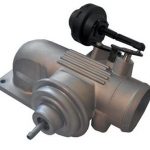Table of Contents
What is engine oil
Without going into too much detail, we can define engine oil as the defender or protector of metal surfaces. Its task is to reduce the friction between the engine’s mechanical car parts in contact with each other. If it seems little to you, know that it does much more. It is, in fact, fundamental for the cooling of the mechanisms as it “carries” the heat from the hot zones to the cold ones keeping the mechanical components clean. In short, the engine oil is an element not to be underestimated, and that is why we want to give you some advice to choose the one that suits you best.
The engine oil label: how to understand its specifications
Engine oil specifications are usually represented by an abbreviation that describes its characteristics and what it is intended for. These are not random parameters chosen without criteria: for each of these specifications, numerous tests have been carried out in the laboratory and on the road to understand their suitability and suitability. Understanding what is written on the label is the first step in making a correct choice.

How to choose engine oil
Each engine is different and has different lubrication needs. Owner can find this initial information in the vehicle’s owner’s manual. In particular, it refers to the API – ACEA – Manufacturers specifications. These are essential specifications because they are the ones that establish the minimum requirements to be used with the type of engine mounted on your car.
The second characteristic to consider is the engine oil SAE viscosity, which is always indicated in the booklet and helps to define the degree of density useful for the engine’s correct functioning. Based on variable factors such as the outside temperature (a reference table is usually indicated in the booklet).








